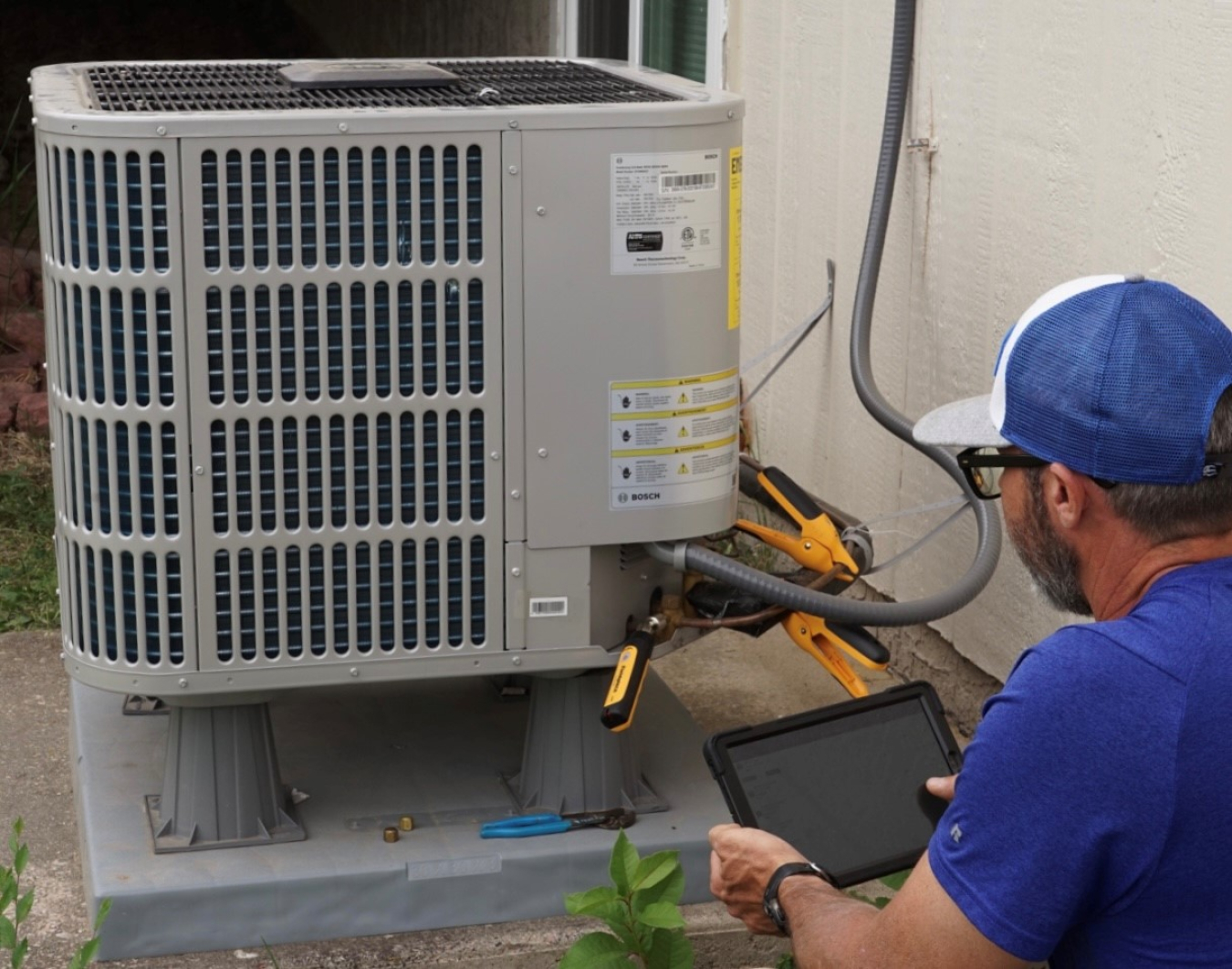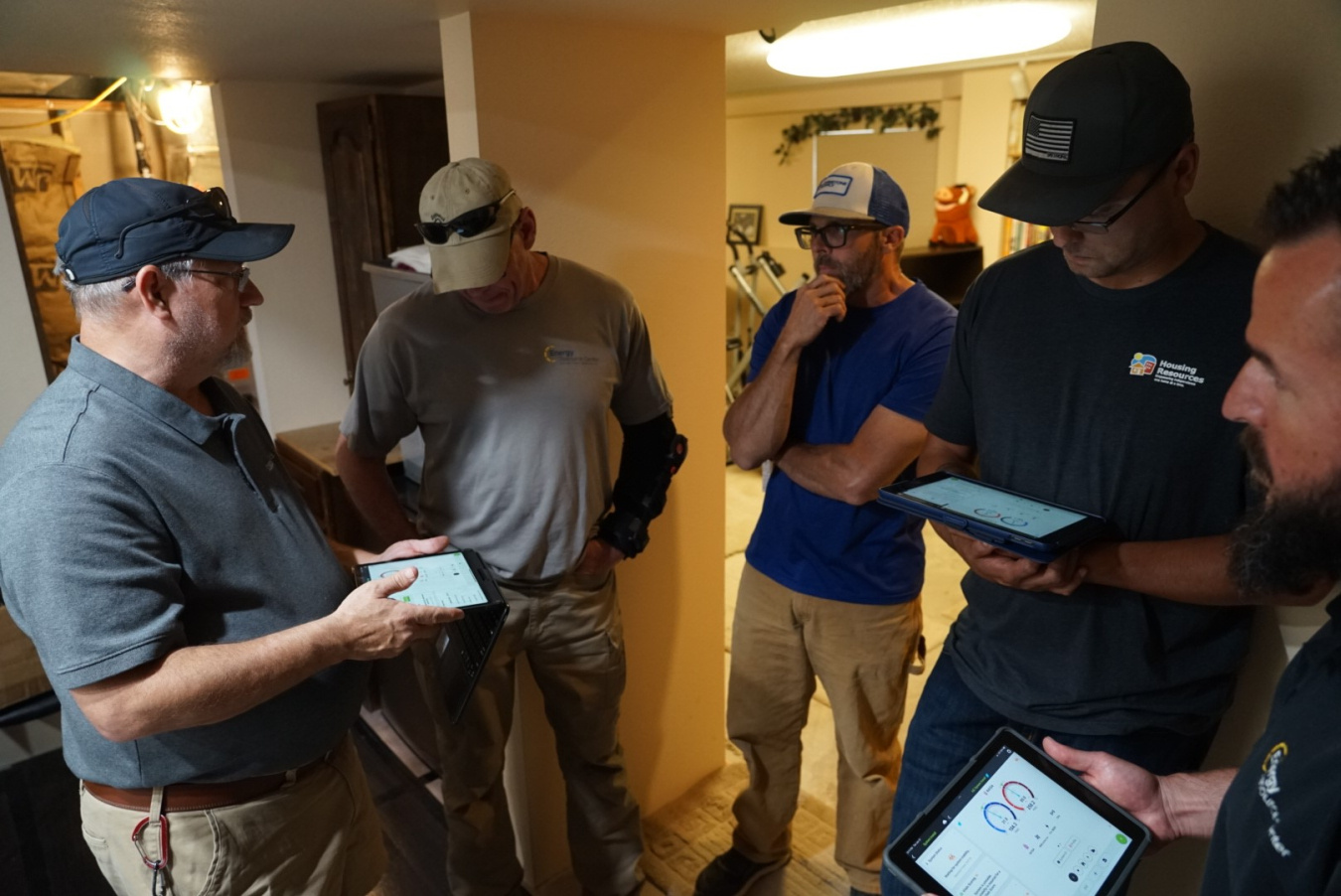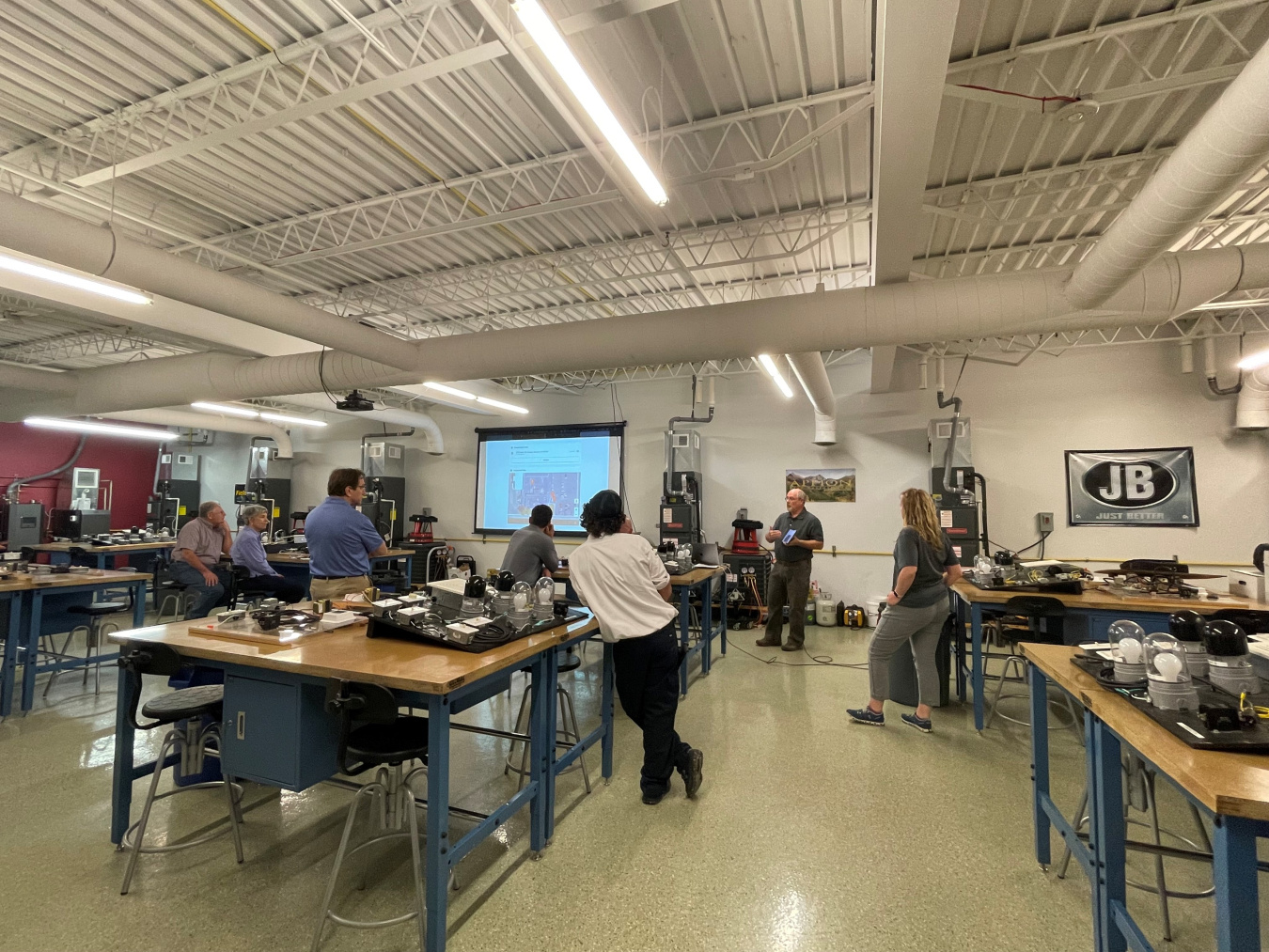Two leading HVAC training organizations adopt DOE curriculum to teach proper heat pump installation.
February 24, 2023
As the numbers come in, it’s clear the market for residential electric heat pumps is … well … heating up! Between 2015 and 2020, the prevalence of heat pumps rose 50% to almost 18 million units nationwide, and just last year, Americans bought 4 million more, outpacing gas furnace sales for the first time ever. Many factors are driving sales, such as the improved performance of today’s models and numerous state and local incentives to convert traditional heating and cooling systems into electric heat pump-driven ones. New incentives from the federal Inflation Reduction Act are also expected to drive consumer demand, and the buildings industry is training up to ensure installations get done right the first time with guidance from the Building Technologies Office (BTO).
To improve heat pump performance, the heating, ventilation, and air conditioning (HVAC) industry has made some significant technological breakthroughs, such as the development of new cold-climate heat pumps made possible in part through the U.S. Department of Energy’s (DOE’s) Cold Climate Heat Pump Challenge. “Newer, variable-speed heat pump technology now provides high heating capacities at very low temperatures and higher-efficiency heating and cooling year-round, making heat pumps viable in nearly any home across the country,” said Ram Narayanamurthy, deputy director of BTO, which has funded HVAC research and development efforts for decades.
As the popularity of heat pumps has soared, the contractors who install them must grow, too—both professionally and in sheer volume to meet demand. DOE recognizes this, as its efforts to ensure technologies succeed in the marketplace include many tech-to-market and workforce development activities like BTO’s Building Science Education Solution Center (BSESC). BSESC provides curated and free-to-use training materials on the fundamentals of building science that help contractors get the job done right. And while heat pumps are not a new concept, the technology and breadth of their applicability—particularly given the increased interest from the residential sector—have advanced enough in recent years to require updated training.

To ensure HVAC technicians are prepared to install high-efficiency heat pumps in all areas of the United States, particularly in homes with existing fossil fuel heating systems, DOE and Pacific Northwest National Laboratory (PNNL) worked with two leading HVAC training organizations, North American Technical Excellence (NATE) and HVAC Excellence, to add curriculum from DOE’s BSESC into their HVAC certification and education standards.
HVAC electrification topics provide a way for instructors to modernize their programs in line with DOE goals and an evolving industry landscape, so building science experts at PNNL worked with each group to identify opportunities to add new topics associated with converting existing fossil fuel systems to electric heat pumps—including cold-climate and dual-fuel systems, programmable thermostats, and smart diagnostic tools. As a result, NATE has decided to update its heat pump specialty certification. HVAC Excellence also followed suit, announcing updates to its competency and task list for instructors of HVAC educational programs, and PNNL is establishing more collaborations with industry certification bodies and educational publishers to announce later in 2023.
NATE worked with PNNL to update their exam requirements and focus on subjects required for converting existing systems to electric heat pumps, such as dual-fuel system controls and cold-climate heat pumps. NATE is the largest U.S. nonprofit certification organization for HVAC technicians, certifying over 35,000 technicians to date, and its heat pump service exam is its most popular specialty exam. It plans to release the updated exam in early 2023.
HVAC Excellence also worked with PNNL to better incorporate BSESC’s curriculum into its competency and task list, which defines the basic knowledge areas that should be included in HVAC training programs. HVAC Excellence is focused on improving the quality of education within the HVAC industry, working with approximately 1,100 out of the 1,400 HVAC training programs in the U.S., and its competency and task list serves as a guide for preparing students with the knowledge and skills needed for successful industry employment. This list is also used by textbook publishers to guide topic choices and earn the HVAC Excellence seal for their books. The updated list was released in December 2022.

“Heat pumps are critical to DOE’s goals,” said Cheryn Metzger, program manager for residential buildings energy-efficiency research at PNNL. “We’re pleased to work with NATE and HVAC Excellence on equipping HVAC technicians with the knowledge they need to install highly efficient, reliable heat pumps that can eventually run on renewable electricity.”
To learn more about PNNL’s efforts, listen to HVAC Excellence’s “Did You Know?” webcast, where PNNL engineers shared information on resources available from DOE and other leading energy-efficiency agencies and the importance of cold-climate heat pumps and smart diagnostic tools.

